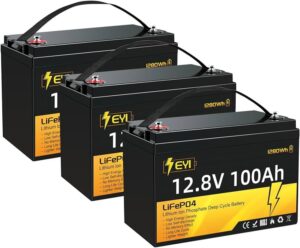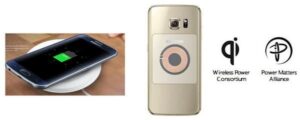Looking to charge a deep cycle battery? You’ve come to the right place! In this article, we’ll walk you through the step-by-step process of charging a deep cycle battery, ensuring that you have a clear understanding of how to keep your battery fully charged and functioning optimally. Whether you’re a beginner or a seasoned battery enthusiast, we’ve got you covered. So, let’s dive right in and explore the most effective methods for charging a deep cycle battery.
How to Charge a Deep Cycle Battery: A Comprehensive Guide
Introduction
Deep cycle batteries are commonly used in various applications such as marine vessels, recreational vehicles (RVs), golf carts, and renewable energy systems. Unlike regular car batteries, deep cycle batteries are designed to provide a steady amount of power over an extended period. To ensure the longevity and optimal performance of a deep cycle battery, it is crucial to charge it properly. In this comprehensive guide, we will walk you through the process of charging a deep cycle battery and provide valuable tips to help you maximize its lifespan and functionality.
Understanding Deep Cycle Battery Charging Basics
Before we dive into the specifics, it’s essential to understand a few fundamental concepts related to charging deep cycle batteries. Let’s explore these key aspects:
1. Battery Voltage
Deep cycle batteries typically have a voltage rating of 6 volts or 12 volts. It is important to know the voltage of your battery to ensure you are using the correct charging equipment and settings. Using the wrong voltage can damage the battery or result in inefficient charging.
2. Battery Capacity
Battery capacity is measured in ampere-hours (Ah) and indicates the amount of charge a battery can hold. It is crucial to consider the battery capacity when selecting a charger and determining the charging time required. A higher capacity battery will take longer to charge compared to a lower capacity one.
3. Charging Methods
There are several charging methods available for deep cycle batteries. Let’s explore the two common ones:
3.1. Constant Voltage Charging
This method involves supplying a constant voltage to the battery throughout the charging process. It is suitable for most deep cycle batteries and is commonly used in automatic and smart chargers. The charger adjusts the current flow as the battery reaches its full charge, preventing overcharging.
3.2. Multi-Stage Charging
Multi-stage charging involves delivering varying voltage levels and current rates during different stages of the charging process. This method helps optimize battery performance and extends its overall lifespan. It typically includes three stages: bulk charging, absorption charging, and float charging.
Step-by-Step Guide to Charging a Deep Cycle Battery
Now that we have a solid foundation, let’s dive into the step-by-step process of charging a deep cycle battery:
1. Safety Precautions
Before beginning the charging process, it is essential to take a few safety precautions to ensure your well-being and protect the battery:
- Read and understand the battery manufacturer’s instructions and warnings.
- Work in a well-ventilated area to avoid exposure to potentially harmful gases.
- Wear protective gloves and eyewear to prevent any accidents.
2. Gather the Necessary Equipment
To charge a deep cycle battery, you will need the following equipment:
- A compatible charger specifically designed for deep cycle batteries.
- A wrench or screwdriver (if the battery terminals require removal).
- A clean cloth or brush to remove any debris or corrosion from the battery terminals.
3. Prepare the Battery
Before connecting the charger, it’s essential to prepare the battery:
- Inspect the battery for any signs of damage or leaks. If you notice any issues, do not proceed with the charging process and consult a professional.
- Ensure the battery terminals are clean and free from corrosion. If necessary, clean them using a cloth or brush and a mixture of baking soda and water.
- If the battery terminals are corroded, disconnect them using a wrench or screwdriver, clean them, and reattach them securely.
4. Connect the Charger
Now it’s time to connect the charger to the battery:
- Make sure the charger is unplugged from the power source.
- Identify the positive (+) and negative (-) terminals on the battery.
- Connect the charger clamps or leads to the corresponding terminals on the battery. Ensure a secure and tight connection.
5. Set the Charger Parameters
Depending on the charging method and charger you are using, you may need to adjust the charger’s parameters:
- If you are using a constant voltage charger, set the charger to the appropriate voltage based on your battery’s specifications.
- If you are using a multi-stage charger, follow the manufacturer’s instructions to set the charger to the correct charging profile for your battery.
6. Start the Charging Process
Once everything is properly set up, you can start the charging process:
- Plug the charger into a power source.
- Ensure the charger is in a well-ventilated area and away from flammable materials.
- Monitor the charging process regularly and check for any signs of overheating or unusual behavior.
- Allow the charger to complete the charging cycle as per the manufacturer’s instructions.
7. Disconnect the Charger
Once the charging process is complete, it’s time to disconnect the charger:
- Unplug the charger from the power source.
- Disconnect the charger clamps or leads from the battery terminals.
- Double-check that the charger is turned off before storing it.
Tips for Charging a Deep Cycle Battery
To ensure optimal charging and maximize the lifespan of your deep cycle battery, consider the following tips:
1. Use a Charger Specifically Designed for Deep Cycle Batteries
Using a charger specifically designed for deep cycle batteries helps ensure proper charging and prevents overcharging or undercharging.
2. Avoid Fast Charging
Avoid using fast chargers or high-amperage charging settings as they can cause excessive heat and potentially damage the battery.
3. Regularly Inspect and Maintain the Battery
Perform regular inspections of your deep cycle battery to check for any signs of damage, leaks, or corrosion. Clean the terminals as needed and replace the battery if necessary.
4. Follow the Manufacturer’s Instructions
Always refer to the battery manufacturer’s instructions and the charger’s user manual for specific guidelines and recommendations.
5. Do Not Overcharge or Undercharge
Overcharging or undercharging a deep cycle battery can significantly reduce its lifespan. Follow the recommended charging times and do not exceed the specified voltage limits.
6. Store the Battery Properly
If you need to store your deep cycle battery for an extended period, ensure it is fully charged before storage, and keep it in a cool, dry place away from direct sunlight.
Charging a deep cycle battery correctly is crucial to ensure its longevity and optimal performance. By following the step-by-step guide provided in this comprehensive article, you can confidently charge your deep cycle battery and maximize its lifespan. Remember to prioritize safety, select the appropriate charger, and adhere to the manufacturer’s instructions. By taking care of your deep cycle battery, you can enjoy reliable power for your various applications for years to come.
Frequently Asked Questions
How long does it take to charge a deep cycle battery?
The charging time for a deep cycle battery depends on various factors, such as the battery capacity, charger output, and the state of charge. Typically, it can take anywhere from a few hours to several days to fully charge a deep cycle battery.
What type of charger should I use to charge a deep cycle battery?
It is recommended to use a charger specifically designed for deep cycle batteries. These chargers are often referred to as “smart” or “multi-stage” chargers. They provide a controlled and gradual charging process, which helps prolong the battery’s lifespan and maintain optimal performance.
Can I charge a deep cycle battery with a regular car battery charger?
While you can technically use a regular car battery charger to charge a deep cycle battery, it is not ideal. Car battery chargers are typically designed for quick charging and may not provide the necessary charging profile for deep cycle batteries. It is best to use a charger specifically designed for deep cycle batteries to ensure proper and efficient charging.
Should I disconnect the deep cycle battery from the system when charging?
It is generally recommended to disconnect the deep cycle battery from any devices or systems when charging. This helps avoid any potential electrical interference between the charging process and the connected devices. Additionally, it allows the charger to focus solely on charging the battery, ensuring a more efficient and effective charging cycle.
Can I charge a deep cycle battery with solar panels?
Absolutely! Deep cycle batteries can be charged using solar panels, making them an excellent choice for off-grid or remote applications. To charge a deep cycle battery with solar panels, you will need a solar charge controller that regulates the charging process and protects the battery from overcharging. This setup can provide a sustainable and environmentally friendly charging solution.
What precautions should I take while charging a deep cycle battery?
When charging a deep cycle battery, it is essential to follow these precautions:
- Ensure proper ventilation in the charging area to prevent the buildup of potentially dangerous gases.
- Use the appropriate charger and follow the manufacturer’s instructions.
- Avoid overcharging the battery, as it can lead to reduced battery life.
- Regularly check the battery and charger for any signs of damage or malfunction.
Final Thoughts
To charge a deep cycle battery effectively, follow these steps. First, ensure that you have the appropriate charger for deep cycle batteries. Next, connect the charger to the battery, making sure to match the positive and negative terminals correctly. Then, set the charger to the appropriate voltage for your battery. Monitor the charging process, checking for any signs of overheating or other issues. Finally, when the battery is fully charged, disconnect the charger. By following these steps, you can ensure the proper charging of your deep cycle battery.



